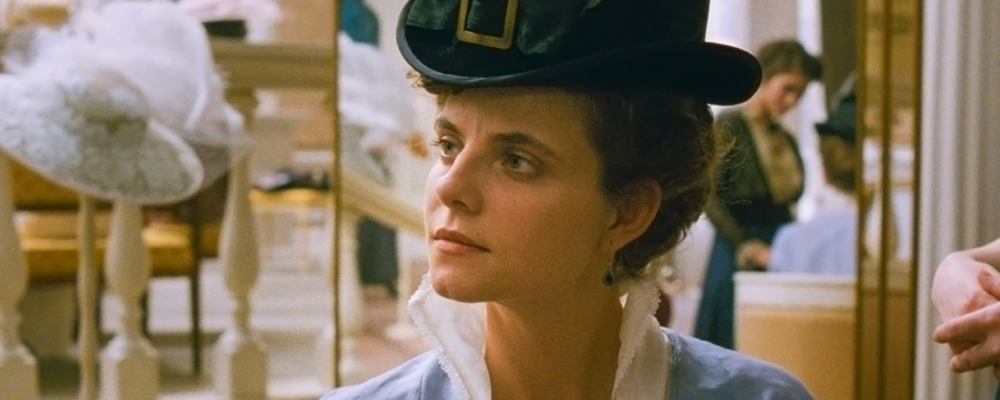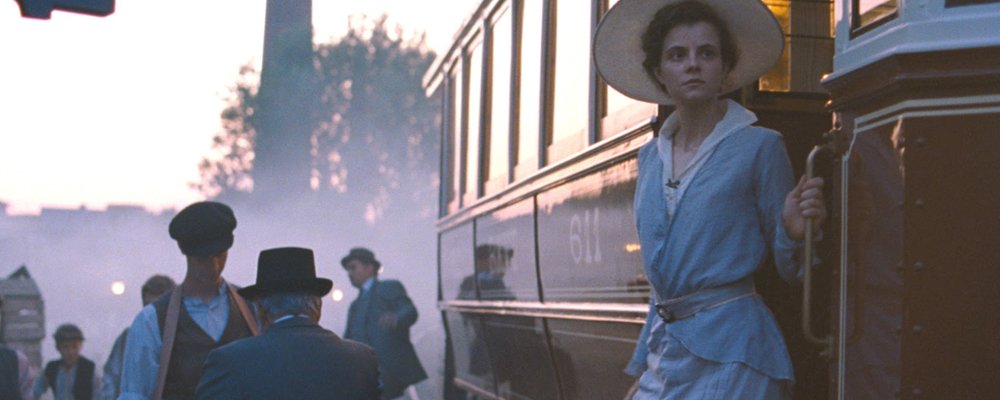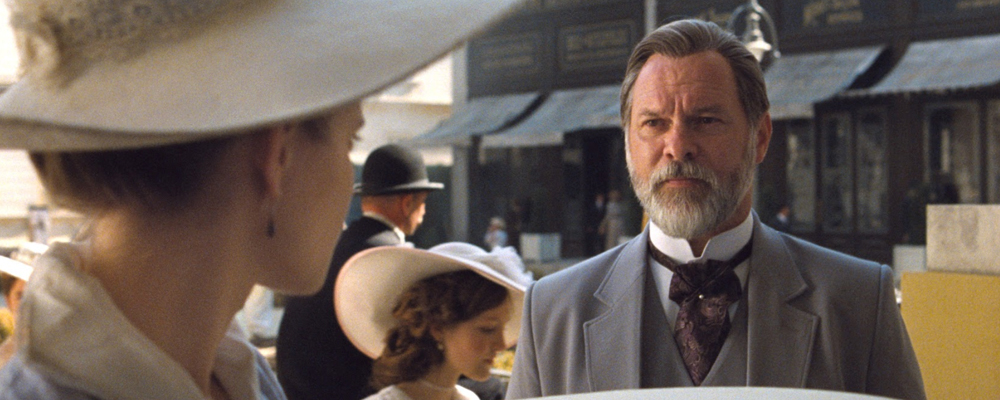László Nemes’ ‘Sunset’ Richly Evokes Budapest on the Eve of World War I
Alci Rengifo
“Sunset” is all texture. It seeks to evoke Europe on the eve of World War I, in particular the old world of the Austro-Hungarian Empire. On this level director László Nemes has achieved something special, even if the script will prove challenging for some audiences more accustomed to fast-paced, popcorn entertainments. This is Nemes’ follow up to his harrowing Holocaust drama “Son of Saul,” which won the 2015 Oscar for Best Foreign Language Film. Obsessed with history and its shadows, he goes further back in time to the dawn of the 20th century, attempting to dissect the dark human impulses that led to cataclysm.
It is 1913 and Irisz Leiter (Juli Jakab) is a young woman who returns to Budapest after being away for years. She seeks work at a distinguished millinery store which was originally founded by her family. An unexplained tragedy resulted in her parents’ death when she was two, and now the business is owned by Oszkár Brill (Vlad Ivanov). At first Brill tries to send Leiter away, but she is stubborn and the city begins to know of her presence. At a boarding house she is approached by a rabid coachman, Gaspar (Levente Molnár), who revels to Leiter that she has a brother. This sets off a chain of strange events as Leiter goes to seek out her mysterious sibling, finding out he goes by Kalmar and is suspected of having butchered a local aristocrat, Count Redey. Redey’s widow (Julia Jakubowska) has gone mad while mourning and wanders into the shop regularly in a haze. As Brill allows Leiter to work at the store, she inspires quiet envy, especially from Brill’s top manager, Zelma (Evelin Dobos). But right now the main priority is the store’s 30th anniversary, which will be celebrated with the arrival of royals and much revelry. Yet a dark shadow looms over it all, namely Kalmar and a private army of discontents he has amassed who target the rich in bloody raids. Leiter soon realizes their next target is Brill.
Nemes described to Entertainment Voice the idea of “Sunset” as crafting a literal point of view in another era. “I wanted to experience it through the eyes of another person,” he says. This is where the film vastly succeeds. There is not a single moment that does not have the ambiance of going back in time. 1913 Budapest becomes a richly detailed labyrinth of peoples and social classes. Mannerisms, sounds and masterful art direction accomplish what Nemes described as, “going to the very texture.” Cinematographer Mátyás Erdély bathes everything in evocative light, with evenings that have a subdued, golden glow. A sense of disorientation and dreaminess is achieved in the way Nemes follows Leiter from behind through this world, giving the impression we are walking with her. There is a Stanley Kubrick feel to the tracking shots that also function as guides through every corner of this long gone Budapest. Like Kubrick, Nemes becomes more concerned with showing us a world than sticking to conventional narrative.
If “Sunset” is visually immersive, where it will truly challenge audiences is in its pacing and plotting. At 2 hours and 20 minutes, it takes its time to establish an environment. Nemes’ screenplay feels more like a vast metaphor or idea, as opposed to a storyline. Things are left unsaid (like how Leiter’s family was burned down) and revelations are quite literally made through glances and cryptic lines. As he himself confirms, the idea is to evoke a civilization in decline. “We are in love with our technology and have illusions about our power,” says Nemes when commenting on the story’s relevance. Like much of aristocratic Europe right before the deluge of 1914, the Budapest of the film is governed by rigid class divisions. The poor toil while the royals bask in decadent illusion. Nationalism and a worship of strength would contribute to the firestorm of the war, class divisions would then erupt in revolutions as a result. The germs are all buried in the film’s subtext.
More than any linear plot what remains in the memory from “Sunset” are specific moments. We remember Kalmar’s anarchic raid on an evening party, setting mansions alight, attacking wealthy maidens and looting. In another scene Leiter will take Zelma’s place to go and deliver some hats to a royal palace, where monocle-wearing men in suits seem to sniff and inspect her like prey. As Nemes describes certain moments, it is as if these characters have a “god point of view.” Like Michael Haneke’s “The White Ribbon,” about Germany at around the same time period, the more you know about history, the more the small details create powerful metaphors or references.
This is a film of quiet tension, guided by light and silence. According to Nemes, one of his major influences is F.W. Murnau’s classic 1927 “Sunrise,” a masterpiece of mood and evocation. Juli Jakab is both serene and passionate, operating like a survivor and investigator. “I have this Eastern European approach to casting. I wanted to have someone who is connected on a performance level. I knew this young woman who was from ‘Son of Saul,’ she carried something similar to the character that I envisioned,” says Nemes about choosing Jakab. It was a good choice. She can express without words.
It will be easy to sense impatience with viewers accustomed to historical pieces with quick pacing and action climaxes, this is not a Ridley Scott film. The narrative becomes archaic, and we are left wondering at times how Leiter knows certain things, or gets to specific places. But if you give the film a chance consider it more as a mosaic. Leiter is like a wandering soul in a society sleepwalking towards an apocalypse. The final, bloody explosion in a wealthy estate is a preview for what is to come, and indeed, Nemes closes the film in the muddy trenches of the Great War. “Sunset” has an impressive sense of place, and while it is about the past, it is easy to suspect its tone is more than apt for today, as uncertainty again reigns.
“Sunset” opens March 22 in select theaters.




